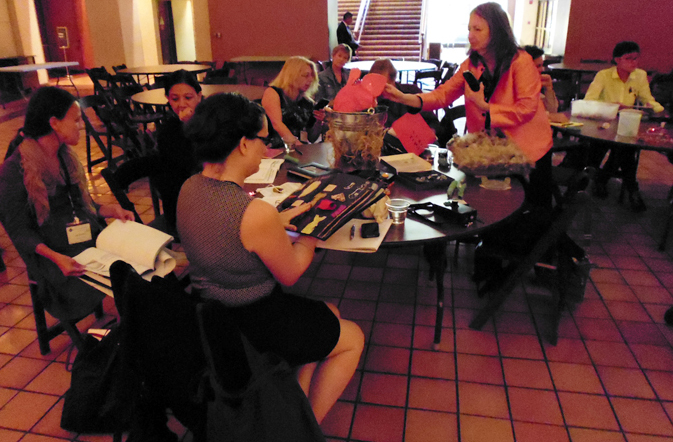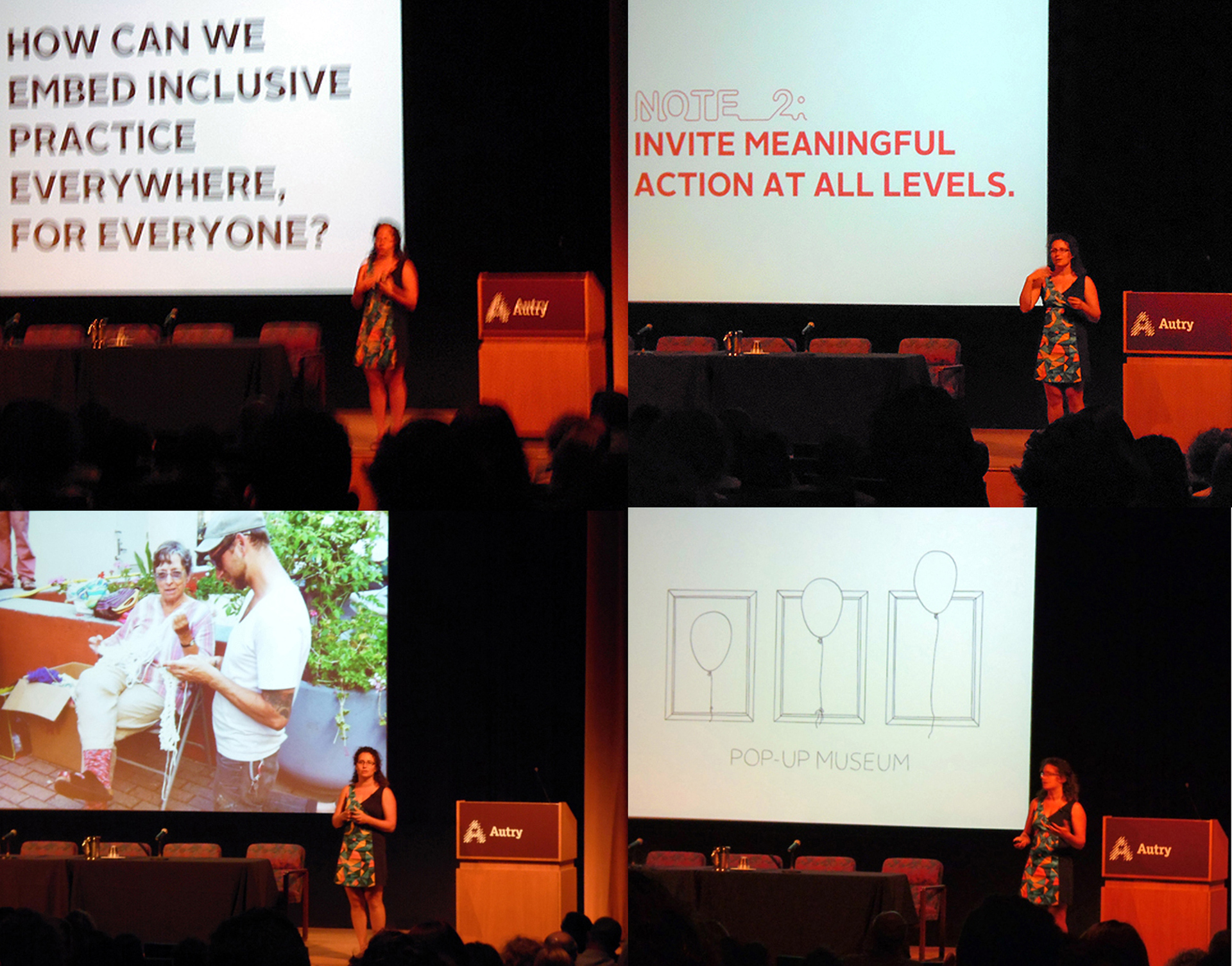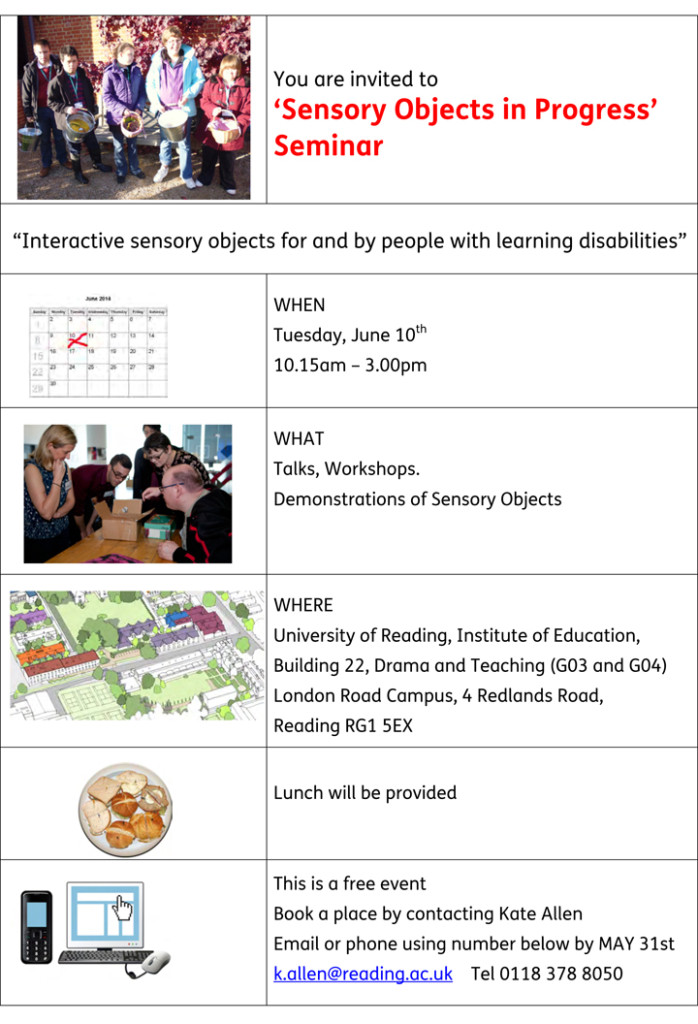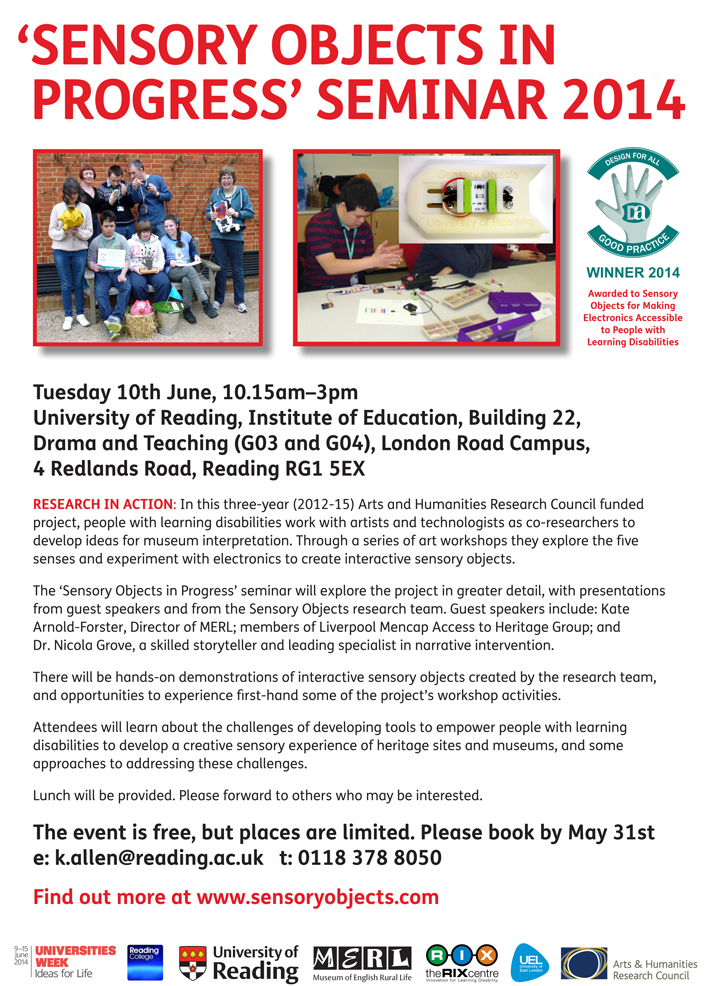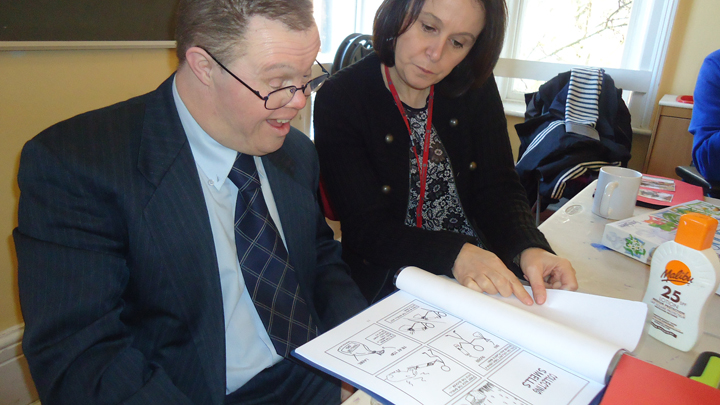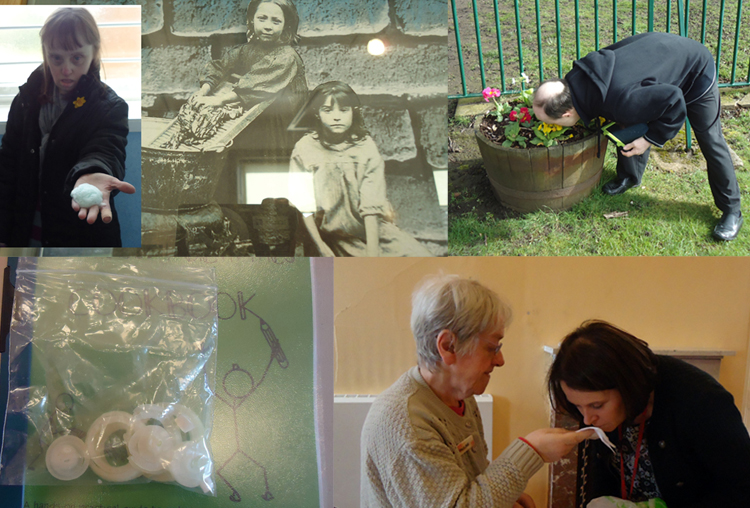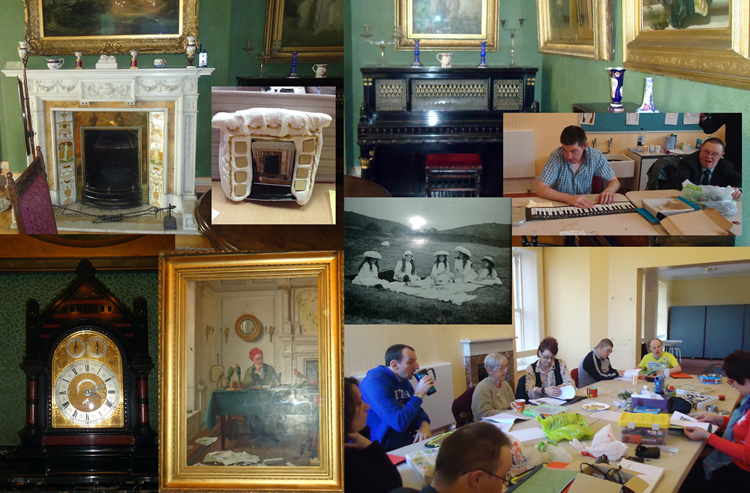Kate and Nic gave a hands on presentation of the Sensory Objects project to the Inclusive Museums Conference at the Autry Museum in Los Angeles. We sent a big box containing Sensory Objects developed by our Co-researchers from Reading College at MERL and also the Access to Heritage Group in Liverpool. We showed slides and videos of our current group from the Tower Project at the British Museum to explain our project conference attendees. We met people from all over the world who were interested in our project. The pictures below show some of them trying out the objects you can see Phillip and Johns scrapbooks of Sudley House Liverpool, Sians mooing boot and Rachel’s Pink grunting Pig and Nic explaining our ideas of using Squishy Circuits, littleBits and our research with littleBits go LARGE.
During the conference there were many talks and discussions often all happening at once. One of the most inspiring talks, I thought, was by Nina Simon, she wrote a book that helped give shape to our sensory objects project The Participatory Museum. Below are some images she used during her talk about Santa Cruz Museum where she is working at now. Her talk showed her ideas and experiences of making the museum a place where everyone can feel welcome and take part. She mentioned Pop Up Museums and also the idea of the museum acting as a place for people to have conversations, bringing unlikely people together, she described it as ‘bridging’ the two people bottom left of the picture are a lady who knits and a graffiti artist who meet during a workshop at the museum and really got on.
During the talk Nina mentioned some of the problems of making the museum more participatory, that some people in the community accuse her of dumbing down the museum, she illustrated the problem by showing this cartoon below. You can’t please everyone, in the cartoon a character called MAH that Nina said represented her is telling Michelangelo that his painting of the Sistine Chapel is “a bit passive and that he must engage the visitor, leave room for the visitors to colour in your work with crayons or paint ball! you know…. dumb down your work!” Nina mentioned that by widening the audience to the museum you will also alienate people who enjoyed it as it was, but attendance and participation in the Santa Cruz Museum continues to rise and generate income because of her ideas of inclusion.
The video below shows Nina giving a talk which has similar content to the presentation at the Inclusive Museums Conference.

